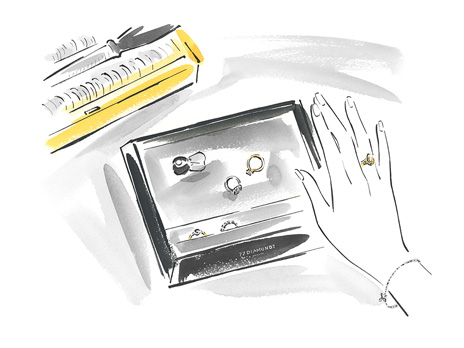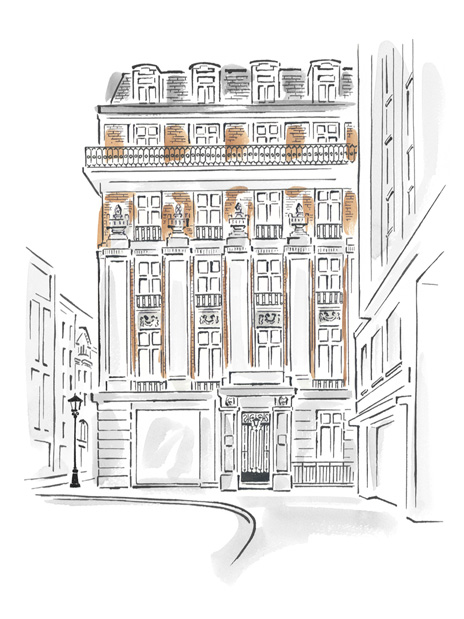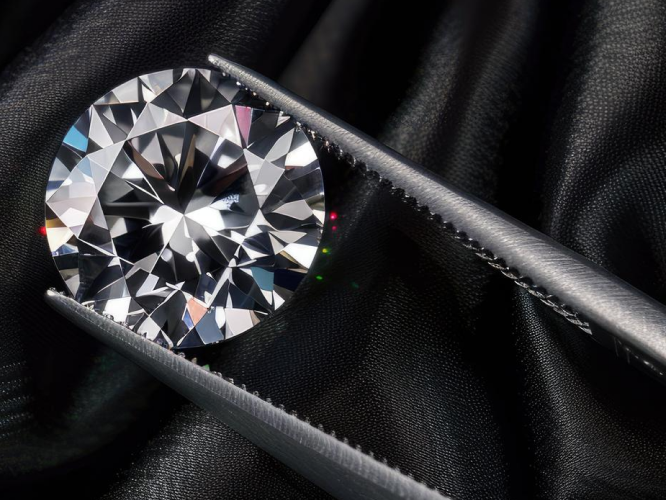What they Symbolise
Sapphires have been a prized and valued possession for centuries and across many cultures. In ancient Persia,
for example, it was believed the world rested on a giant sapphire and that its reflections gave the sky an
evenly blue colour.
In ancient Greece, rich families thought these colorstones could protect owners from harm and envy, and
throughout the medieval period, people believed sapphires could cure diseases and were an antidote to
poison.
Today, these vibrantly coloured gems represent nobility, trust, truthfulness and wisdom. They are also the
September birthstone and are used to commemorate 5th and 45th wedding
anniversaries.
Timeless Designs
In folklore, history and art, sapphires are often associated with the colour blue. In reality, sapphires can
be a wide variety of colours as they are part of the mineral variety corundum , similar to
rubies.
However, in the jewellery industry, you’ll find these gems to be almost invariably blue coloured. The vivid,
vibrant hues of the most exquisite sapphires can almost seem like velvet, and serve to create truly
outstanding pieces of jewellery.
The most famous sapphires include the Rockefeller Sapphire, a 62-carat gem discovered in Myanmar. In the
1930s, it was rectangularly cut first into a brooch and then a ring, which features two triangular diamonds
on each side.
Sapphires are also the second most chosen gem after diamonds for engagement rings. This is no surprise, as
one of the best-known sapphires in history is a 12-carat engagement ring worn by Princess Diana and later by
Kate Middleton, the Duchess of Cambridge.
Sapphires are also durable and resist well to scratching and chipping, so they can easily be worn on a daily
basis.
What to Remember
Cost and Carat
The final price of your sapphire will be determined by many factors, including colour, carat, cut, clarity,
treatment and origin. A right combination of these will ensure your gem’s long-term value remains steady,
perhaps even increasing in time.
Large sapphires are extremely rare and in limited supply. For this reason, carat weight will make the price
of your gem increase exponentially. The price of a 10-carat sapphire is usually 20 times
that of a one-carat stone.
Colour Intensity
Colour is the most significant factor affecting the value of a sapphire. However, unlike diamonds , there is no internationally accepted colour grading
system for this colorstone. AVINA Jewels have adopted the ICL’s seven levels of colour intensity, which
range from Dark to Very Light.
The most sought-after colour intensity in sapphires is Vivid . This colour may also be
described as ‘Royal Blue’, due to its deep, saturated tones.
Some blue sapphires can have slightly violet or green overtones . If these secondary colours
are intense and clearly visible, this may decrease the value of your sapphire.
Clarity
Unlike diamonds, inclusions in colorstones are common, well-accepted and often serve to indicate the origin
of the stone. There are three levels of clarity:
-
“Eye Clean” (EC1 - EC2) indicates that inclusions are invisible to the
unaided eye.
-
“Visible inclusions” (VI1 - VI2) indicates that inclusions are only slightly
visible to the unaided eye.
-
“Included” (I1 - I2) indicates that inclusions are obvious to the unaided
eye.
Cut and Shape
Usually, sapphires are both brilliant and step cut . A brilliant cut ensures an even display
of light reflections throughout the gem, while a step cut lends intense fire to the piece. Some sapphires
may also be cabochon cut, giving them a smooth and rounded finish. Keep in mind, the quality of the cut will
determine the overall price of your colorstone.
On the other hand, the shape of your sapphire will not have a direct impact on price, as this is largely a
matter of personal preference. The most common shapes for sapphires are round and oval , but
you may also find pear or heart shaped stones.
Treatment
Sapphires are most commonly enhanced through heat treatment . By applying heat to the gem,
experts have found that both colour and clarity are greatly intensified. This is a widely accepted practice
in the jewellery trade and most methods have no harmful effect on the stone’s longevity.
Only the finest and rarest sapphires are unearthed in a perfect state without any need for further treatment,
making them significantly more valuable. On average, an unheated sapphire can be 2.5 times more
expensive than a virtually identical heated sapphire.
Origin
Although some sapphires may look similar, their prices will differ due to origin. The most expensive
sapphires come from Kashmir , a region historically known for producing stones of exquisite
colour and quality. The second finest origin is considered to be Myanmar , followed closely
by Sri Lanka, Madagascar or Tanzania . Finally, sapphires from basaltic countries (namely
Australia, Ethiopia, Nigeria, Vietnam, Thailand and Cambodia) are least valuable in terms of origin.





 Book an Appointment
Book an Appointment
 IN / INR
IN / INR
 my bag
my bag
 FAQs
FAQs
 visit our showroom
visit our showroom



